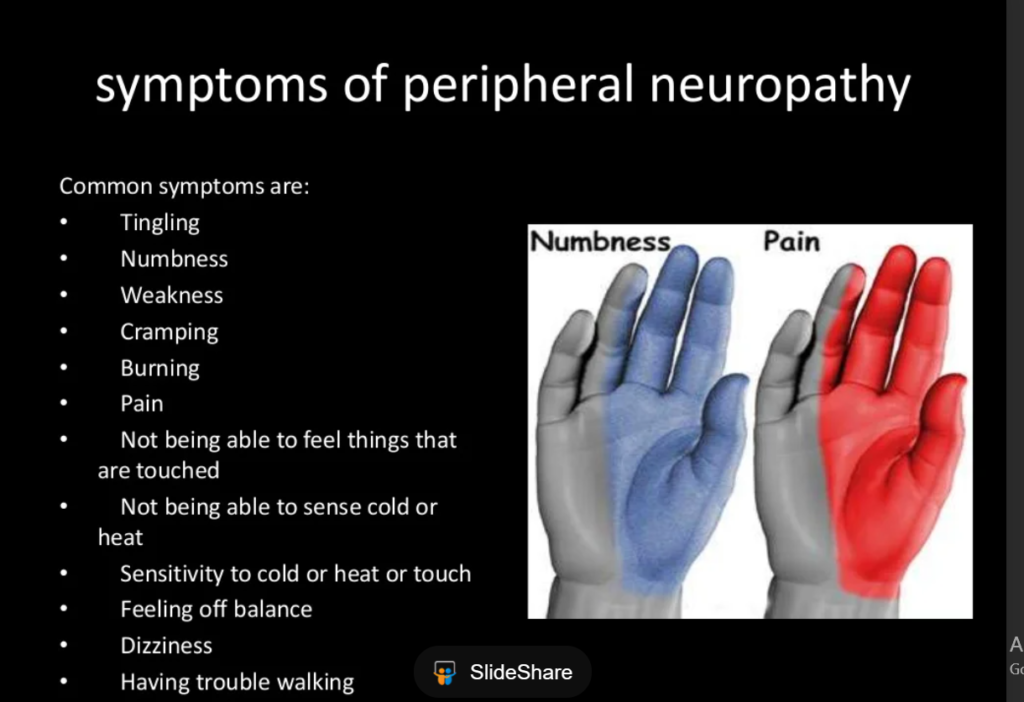For Healthcare Professionals

What is peripheral neuropathy?
Peripheral neuropathy refers to the many conditions that involve damage to the peripheral nervous system, which is a vast communications network that sends signals between the central nervous system (the brain and spinal cord) and all other parts of the body.
Peripheral nerves send many types of sensory information to the central nervous system (CNS), such as the message that your feet are cold. They also carry signals from the CNS to the rest of the body. Best known are the signals to the muscles that tell them to contract, which is how we move, but there are different types of signals that help control everything from our heart and blood vessels, digestion, urination and sexual function to our bones and immune system.
Nerve signal interruption
The peripheral nerves are like cables that connect different parts of a computer or connect to the Internet. When they malfunction, complex functions can grind to a halt.
Nerve signaling in neuropathy is disrupted in three ways:
- Loss of signals normally sent
- Inappropriate signaling when there shouldn’t be any
- Errors that distort the messages being sent
Some forms of neuropathy involve damage to only one nerve (mononeuropathy). Neuropathy affecting two or more nerves in different areas is called multiple mononeuropathy or mononeuropathy multiplex. More often, many or most of the nerves are affected (polyneuropathy).
2. Classifying the nerves and peripheral neuropathies
More than 100 types of peripheral neuropathy have been identified, each with its own symptoms and prognosis. Symptoms vary depending on the type of nerves—motor, sensory, or autonomic—that are damaged.
- Motor nerves control the movement of all muscles under conscious control, such as those used for walking, grasping things, or talking
- Sensory nerves transmit information such as the feeling of a light touch, temperature, or pain from a cut
- Autonomic nerves control organs to regulate activities that people do not control consciously, such as breathing, digesting food, and heart and gland functions
About 75 percent of polyneuropathies are “length-dependent,” meaning the farthest nerve endings in the feet are where the symptoms develop first or are worse. In severe cases, these neuropathies can spread upwards toward the central parts of the body. In non-length dependent polyneuropathies, the symptoms can start around the torso, or are patchy.

3. Types of peripheral neuropathy
There are several types of peripheral neuropathies, including.
- Diabetic neuropathy (a consequence of diabetes)
- Guillain-Barré syndrome, which occurs when the body’s immune system mistakenly attacks the nerves in the body
- Carpal tunnel syndrome, which affects the hand and the wrist and is caused by pressure on the median nerve that runs from the forearm into the hand.
- Meralgia parathesia, which causes numbness and tingling on one thigh.
- Complex regional pain syndrome, involving small-nerve fiber damage that causes excessive and prolonged pain in an affected arm or leg
4. What is Diabetic neuropathy
Diabetic neuropathy is a type of nerve damage caused by diabetes or poor blood sugar control. It can develop slowly after many years of diabetes or may occur early in the disease. There are different types of diabetic neuropathy, depending on the type and number of nerves damaged. It can affect how you move and process sensations such as hot or cold, and how your body regulates activities that you don’t consciously control, such as breathing and blood pressure.
5. Symptoms
- Numbness or tingling in your feet or lower legs.
- Pain (pins and needles)
- Foot complications, such as infections and ulcers or lesions
- Difficulty walking
- Muscle weakness, often in the foot muscles
- Problems with balance and coordination
- Dizziness
- Vision problems
- Problems with how some organs work, such as digestion, bladder function, and sexual function (23)

